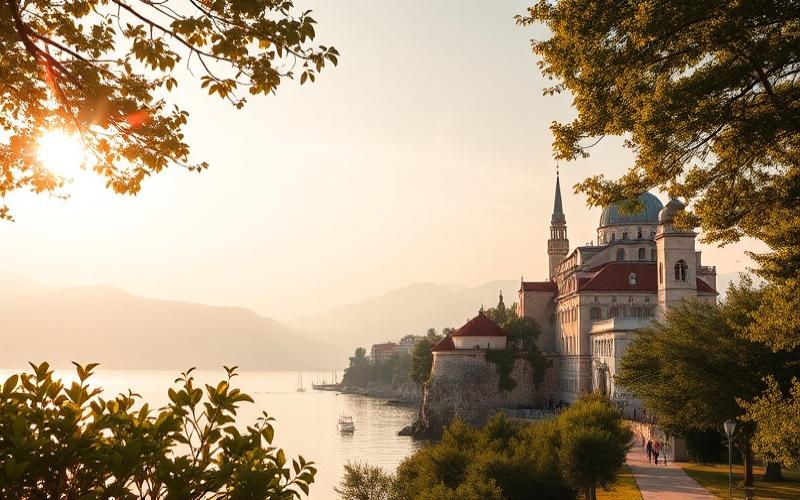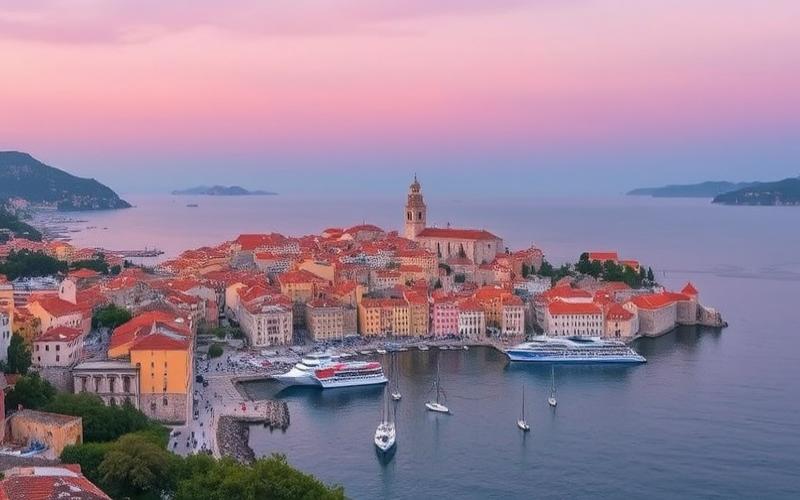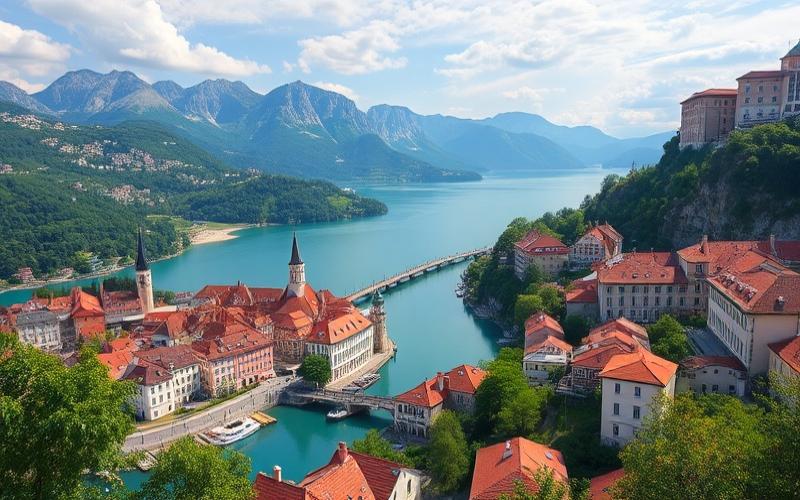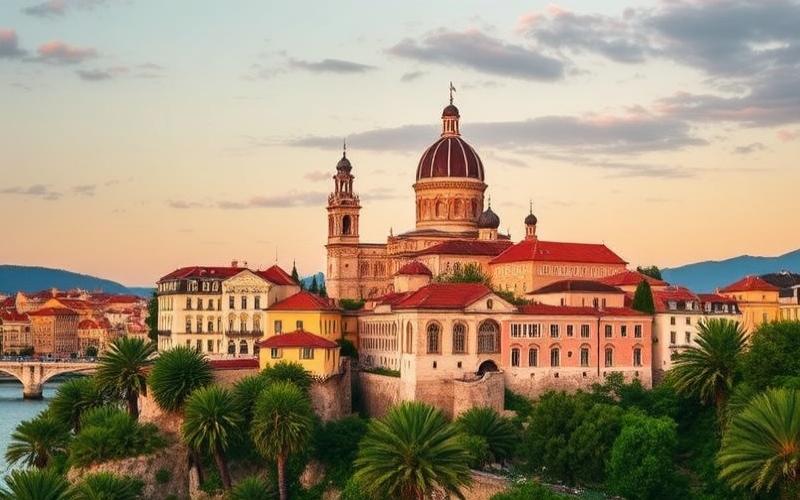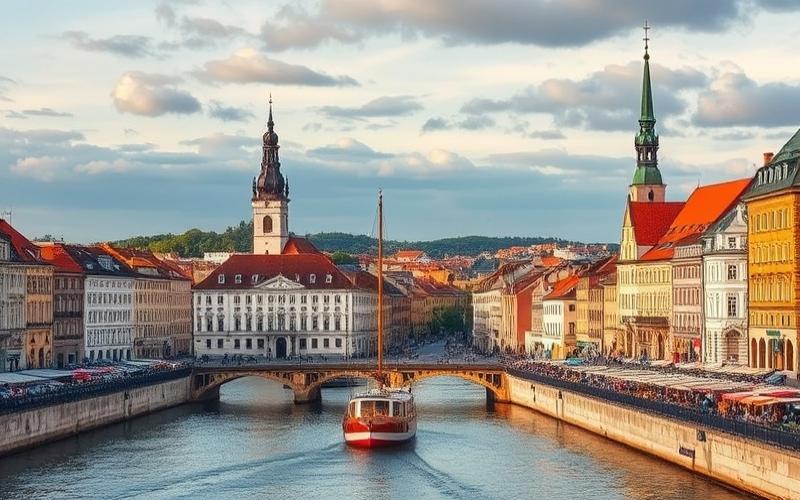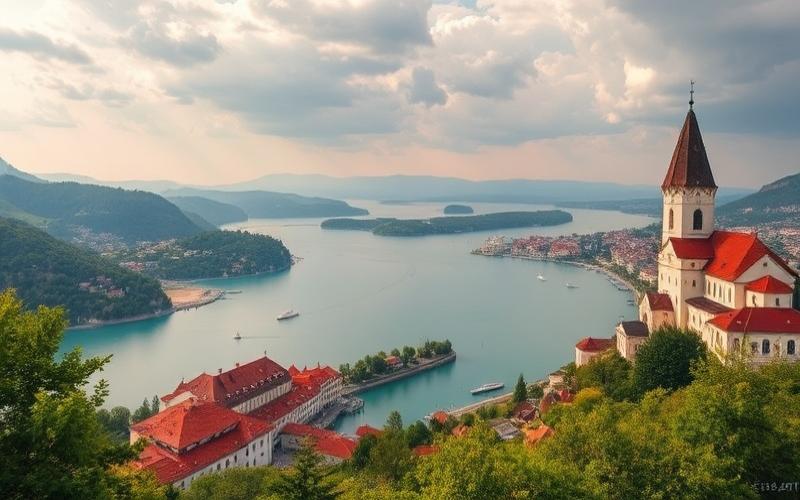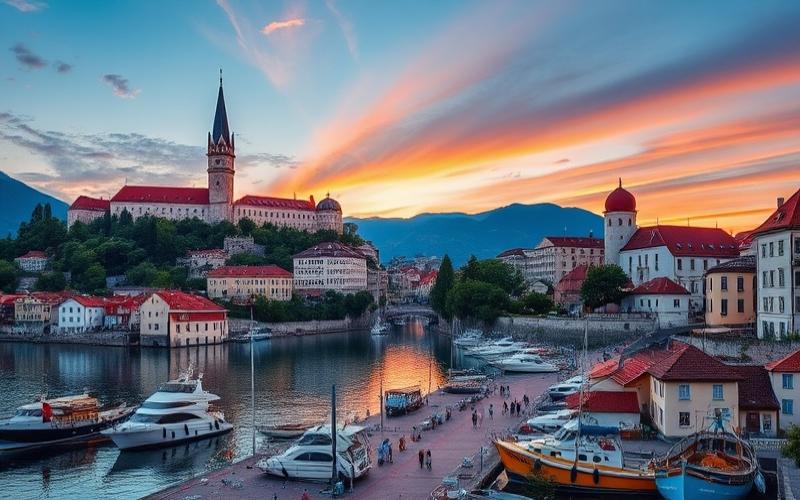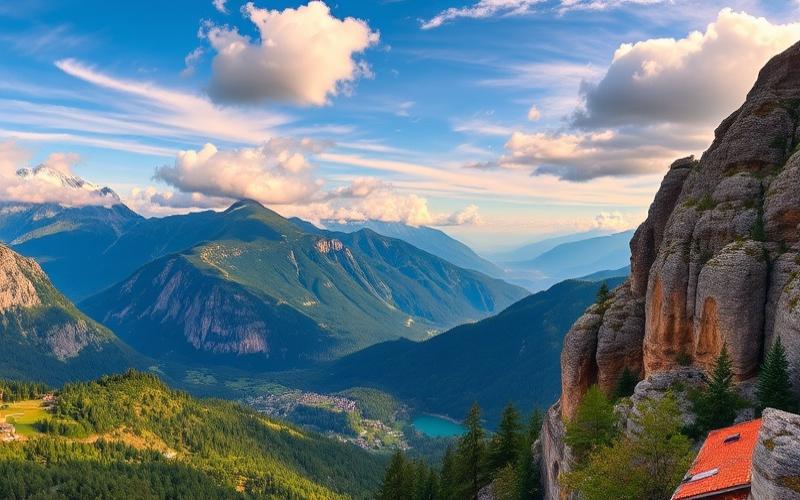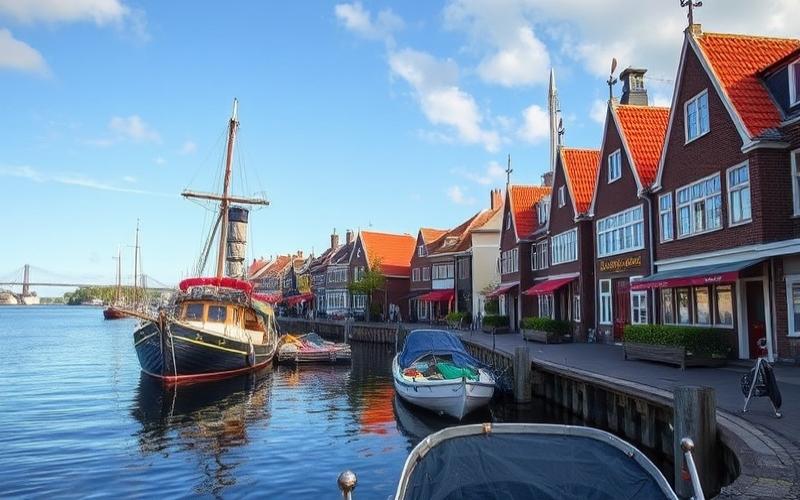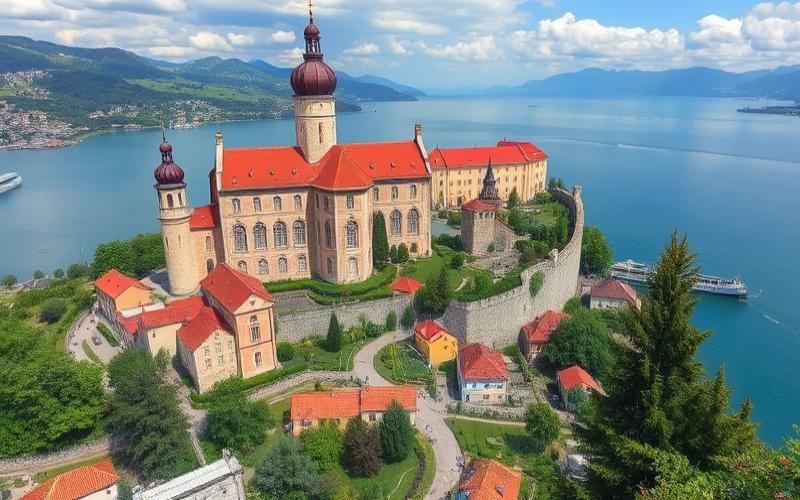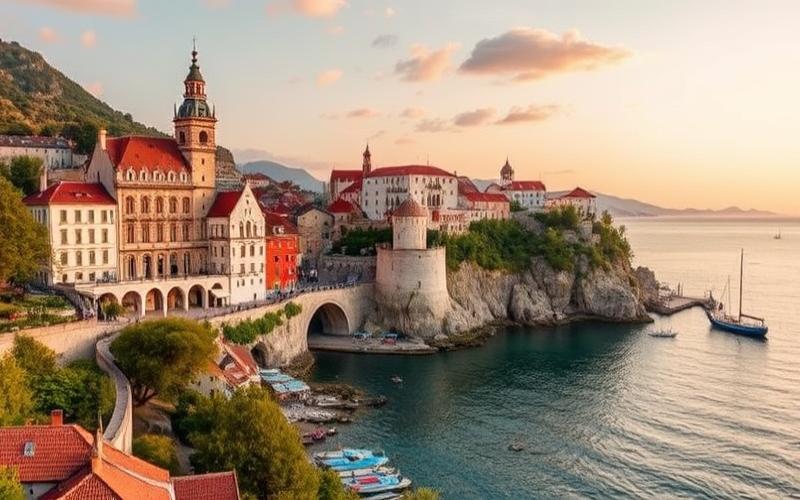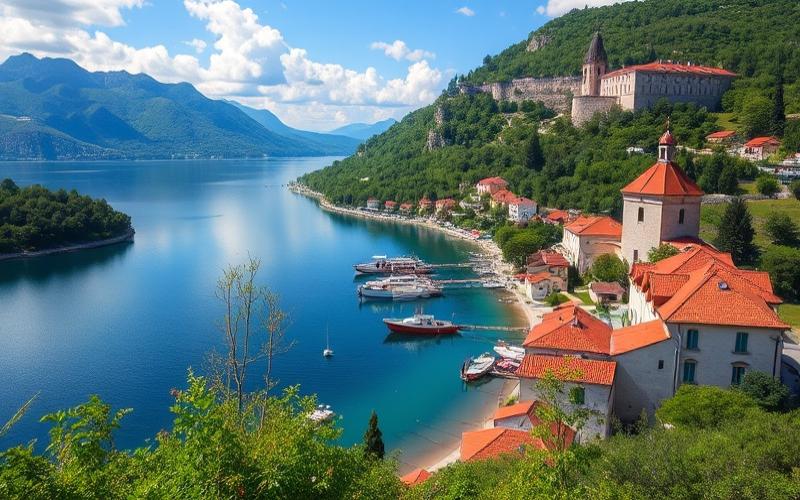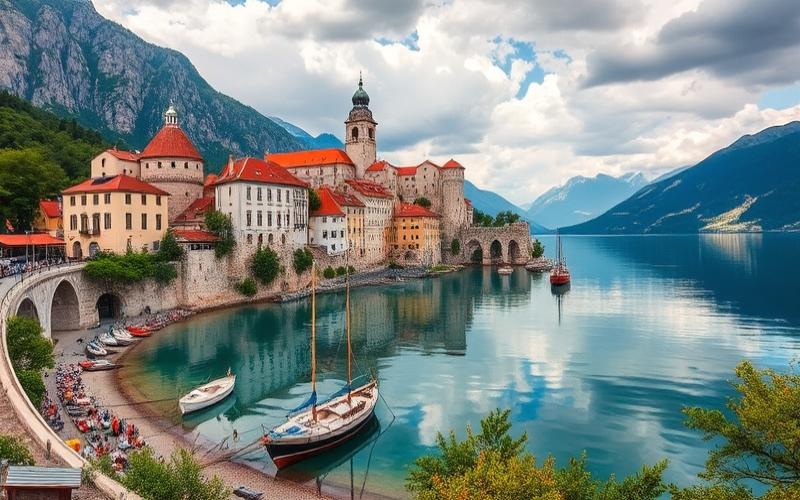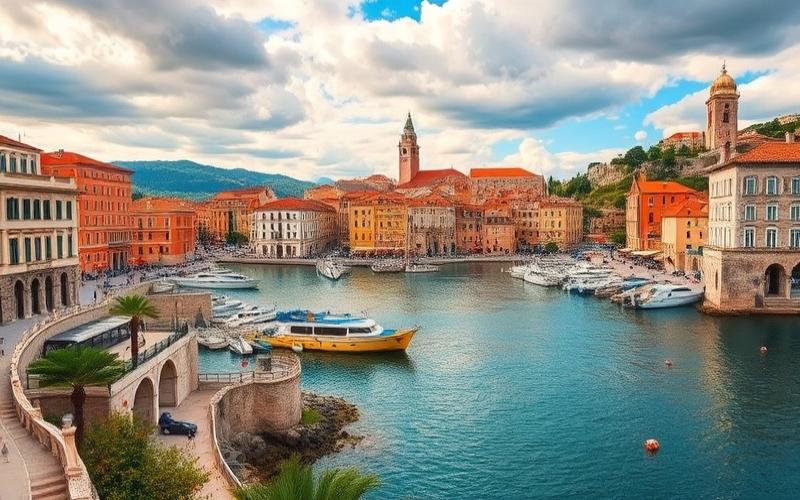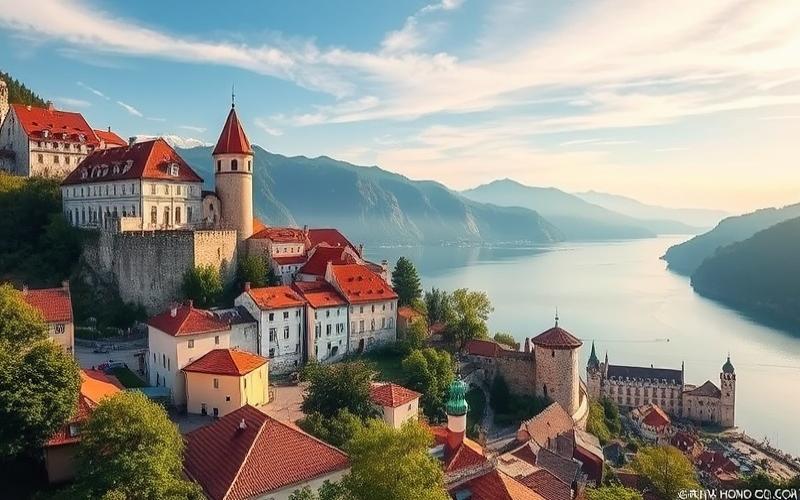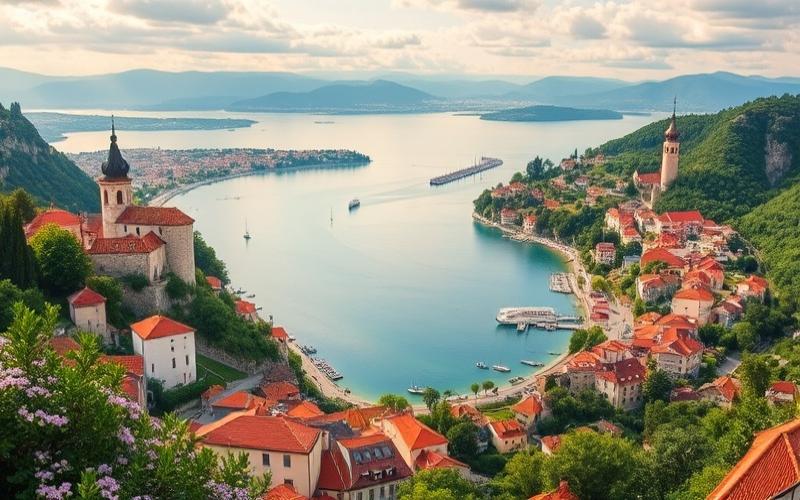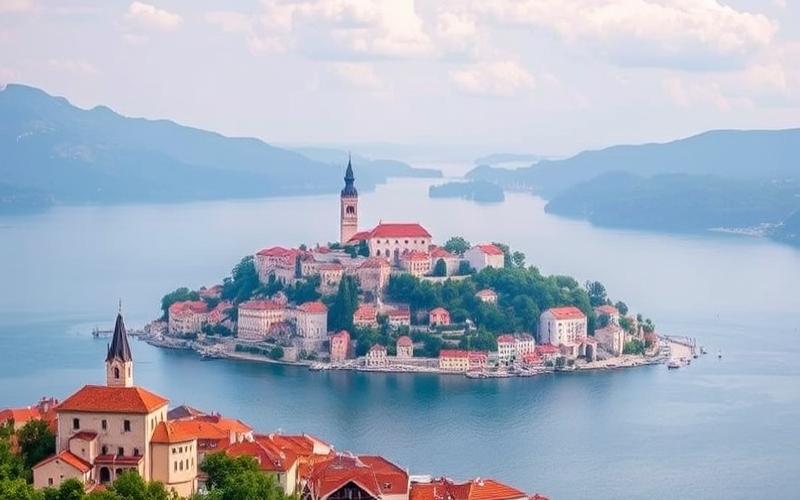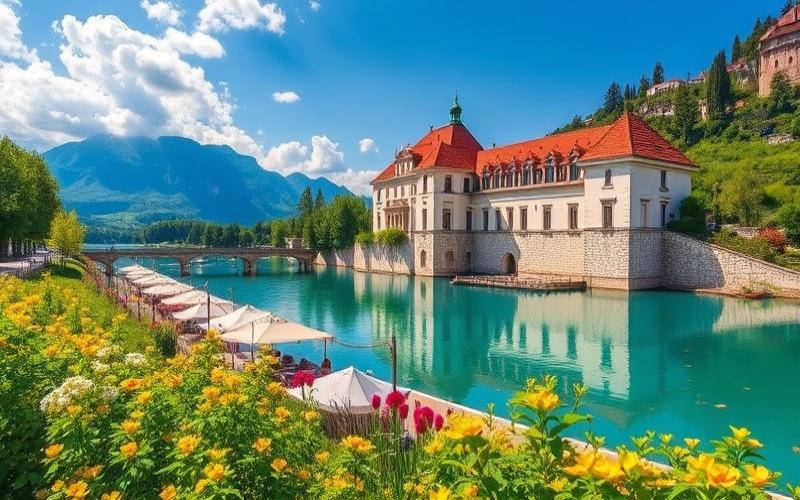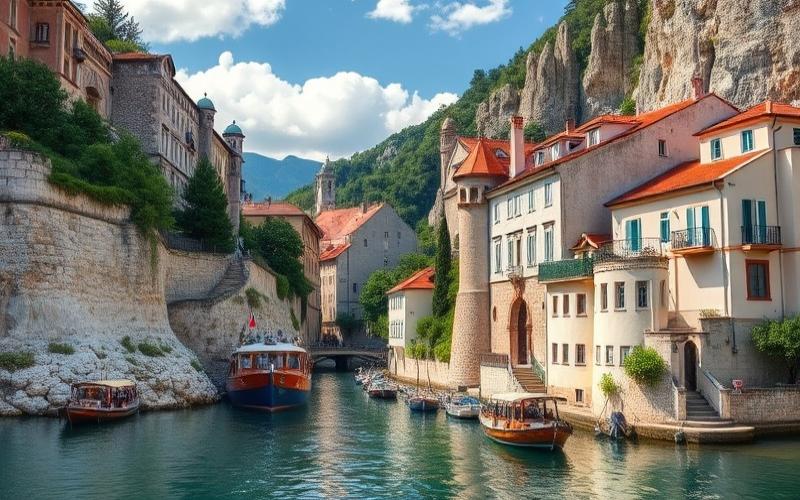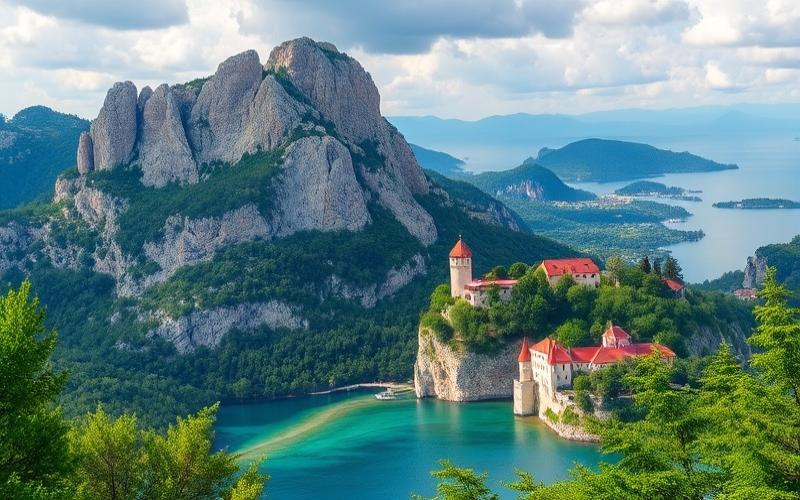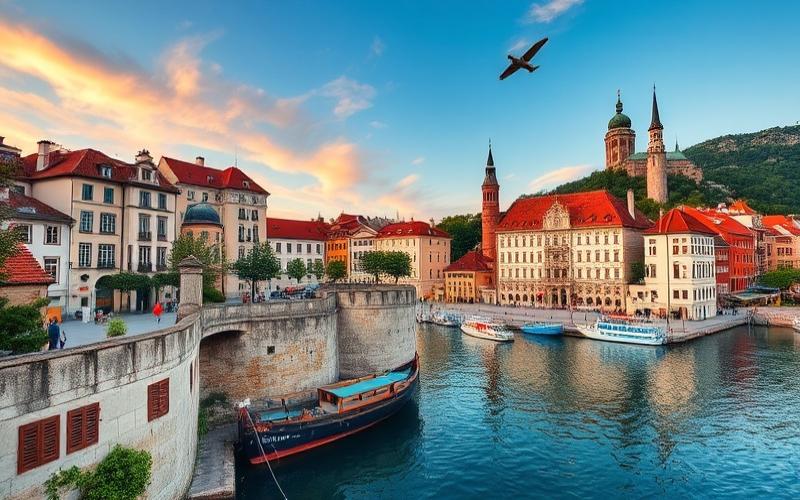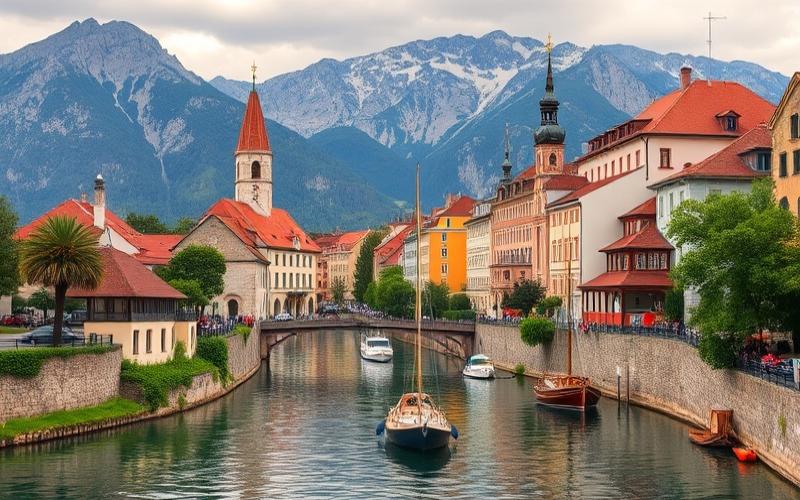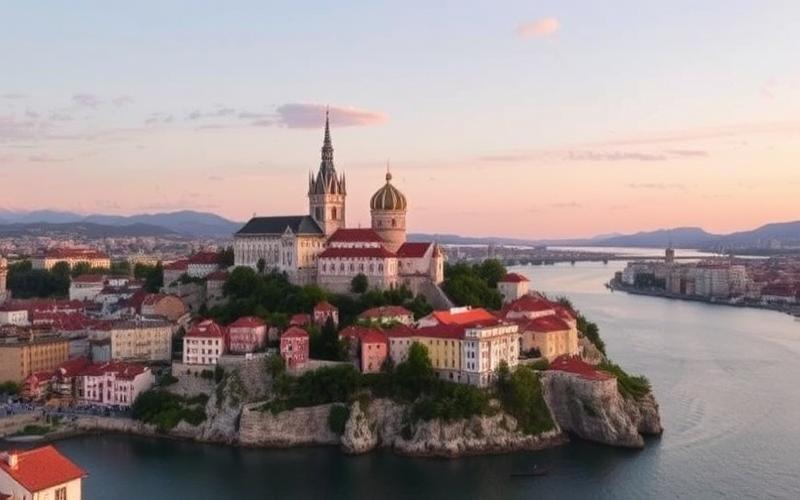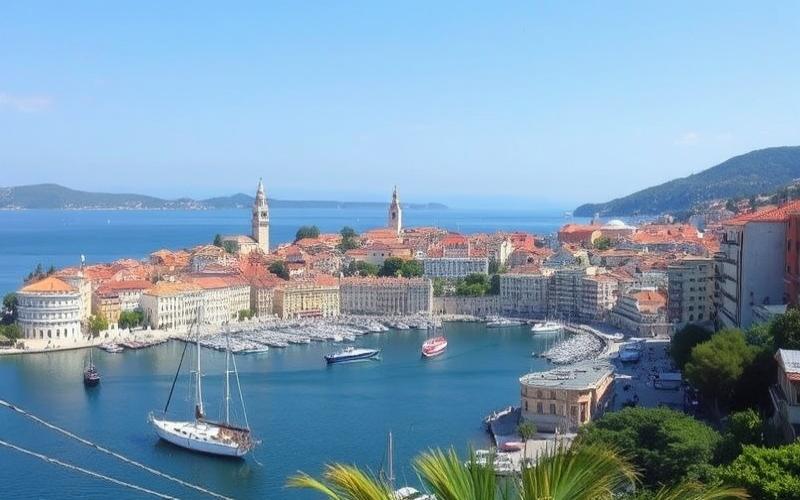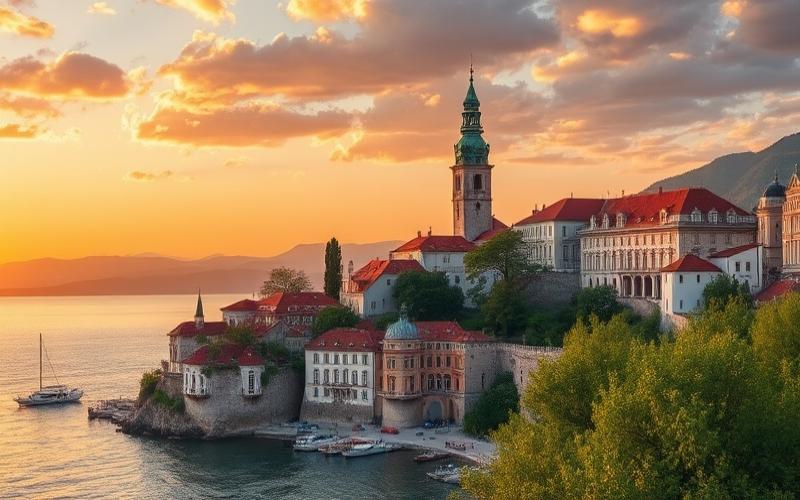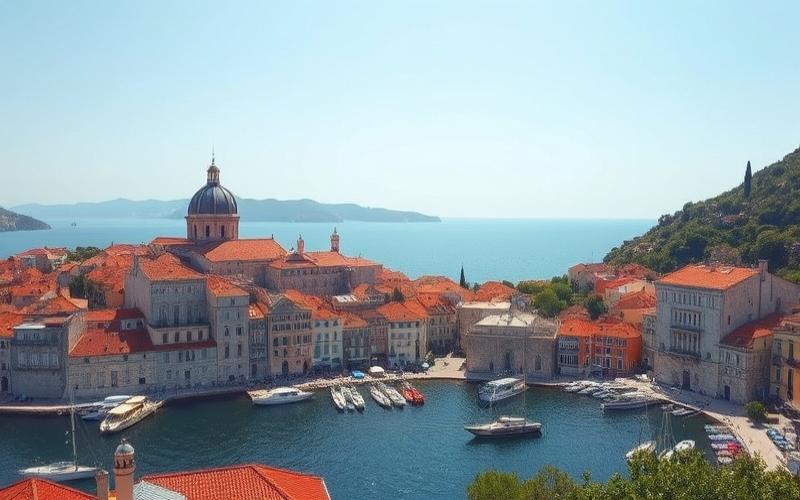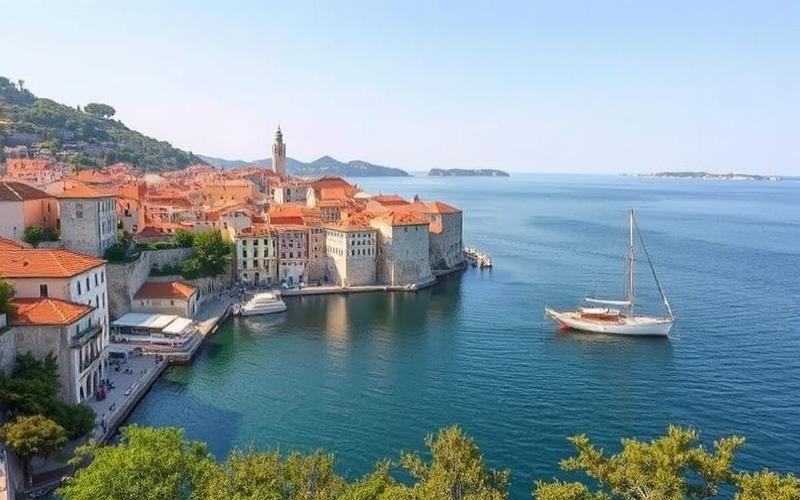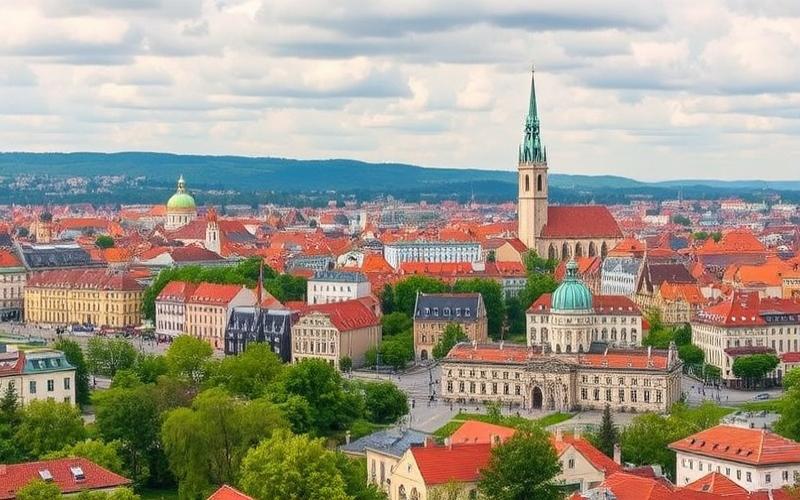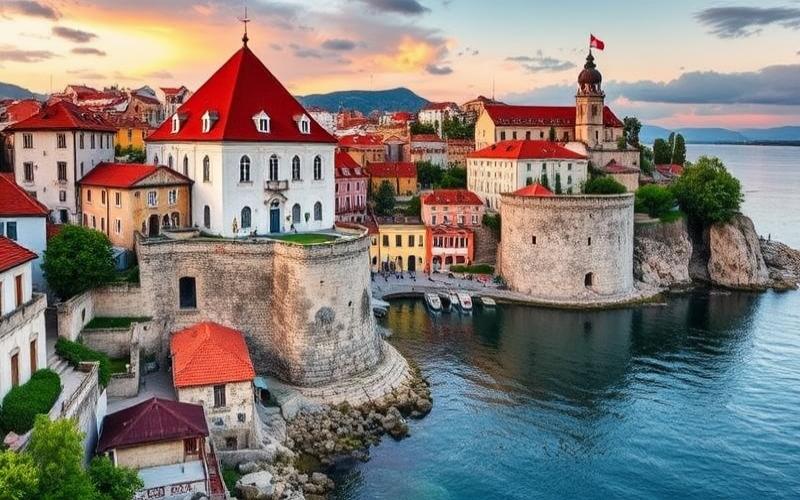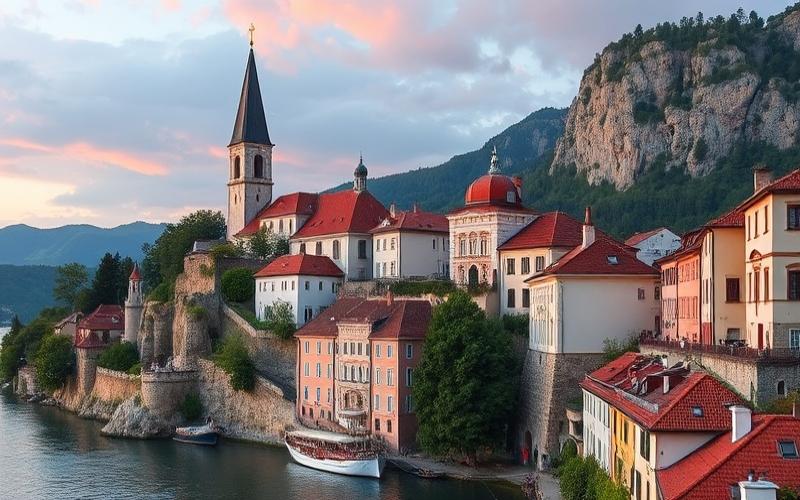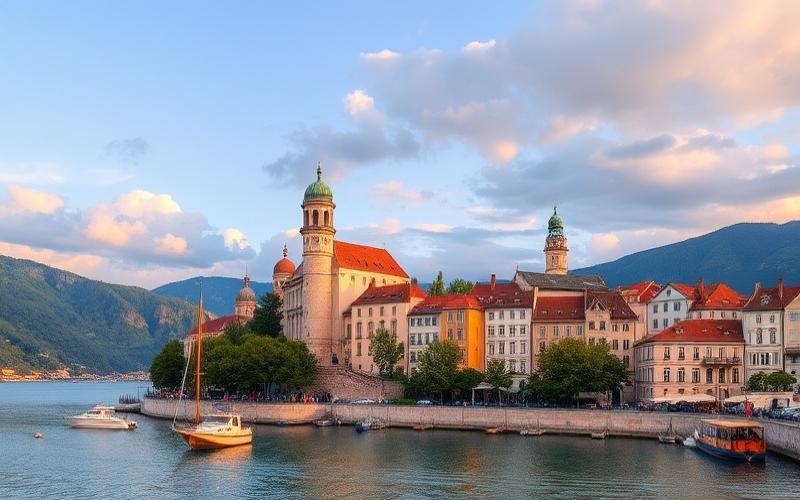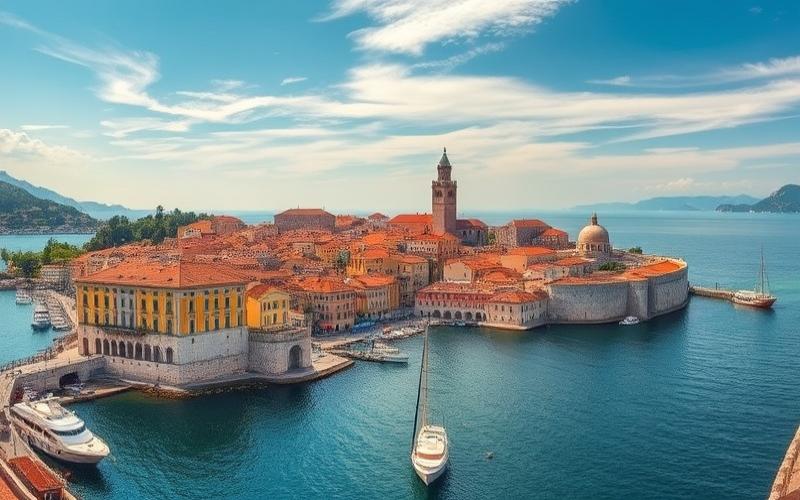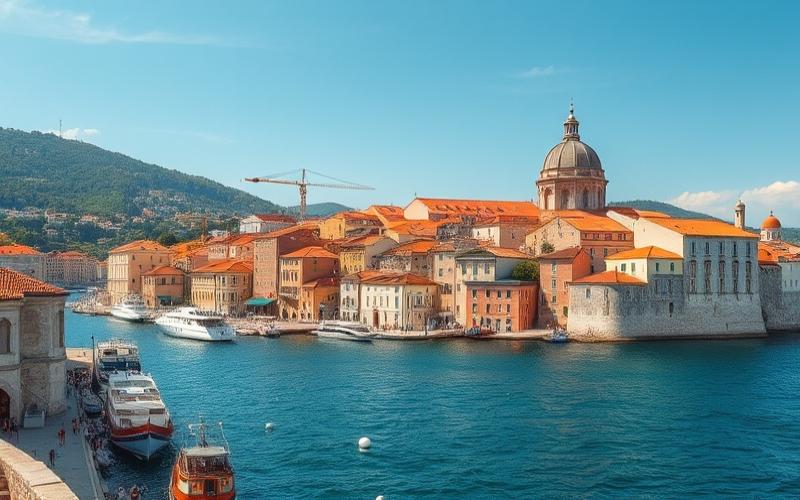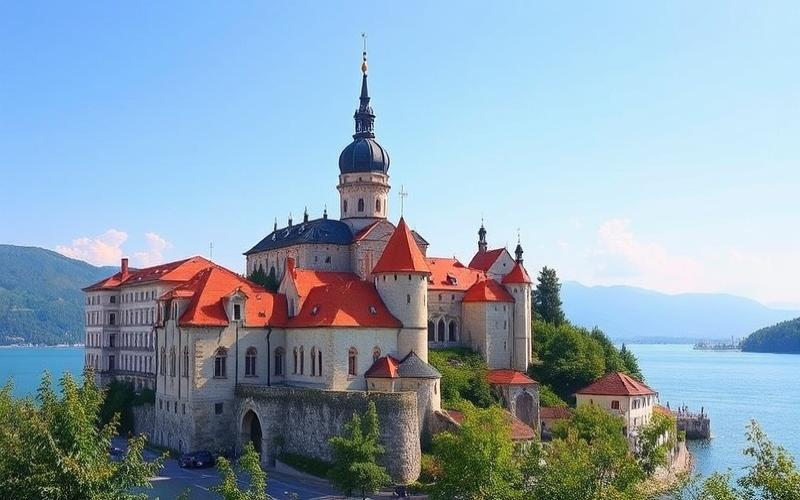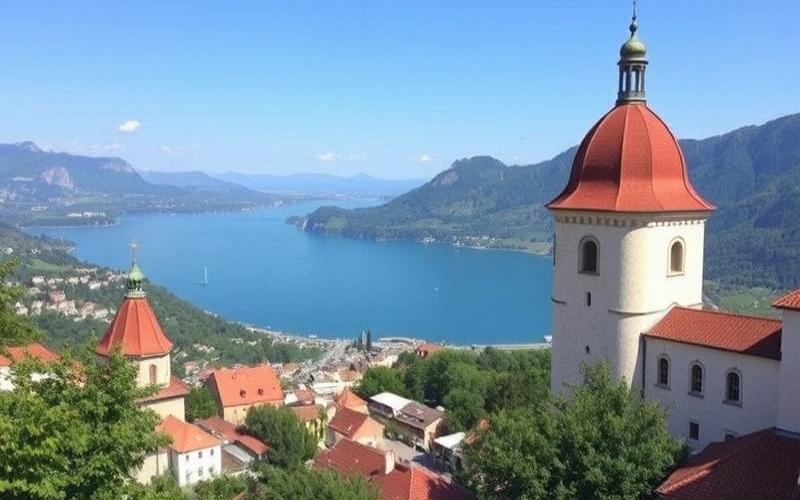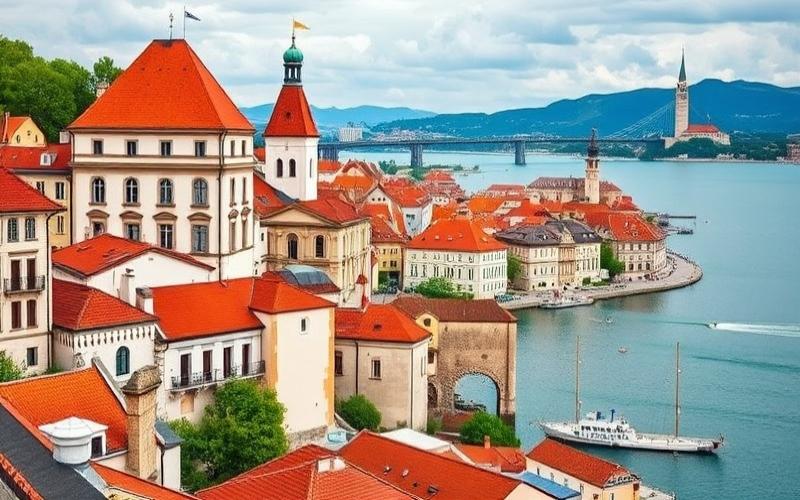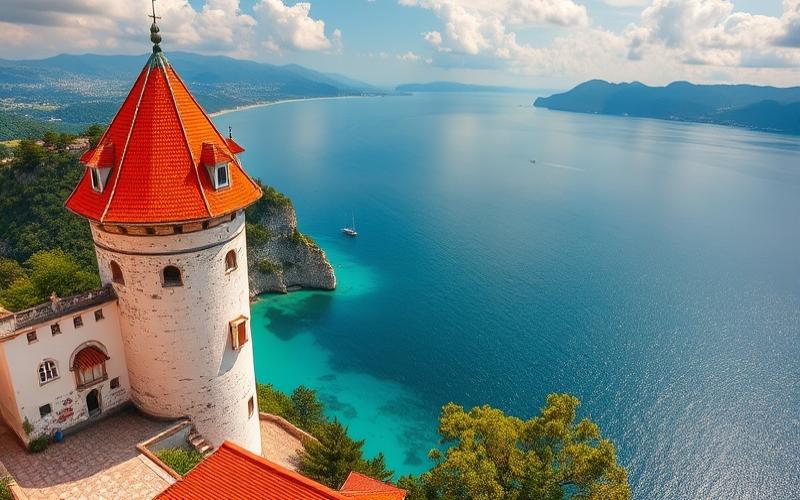
 Published on and written by Cyril Jarnias
Published on and written by Cyril Jarnias
Croatia’s Real Estate Market: Unprecedented Momentum
Croatia’s real estate market is currently experiencing unprecedented momentum, marked by a series of trends that are redefining its landscape.
Growing Demand for Coastal Properties
Driven by the country’s tourist appeal, this demand is accompanied by an increase in foreign investments, making the sector particularly competitive.
Transition Toward Sustainable Construction
The transition toward more sustainable and eco-friendly construction is influencing buyer preferences, encouraging developers to adopt more environmentally responsible practices.
Digitalization of the Real Estate Sector
The integration of blockchain technology for transactions is transforming how real estate properties are bought and sold.
In this dynamic context, analyzing the underlying driving forces and future prospects proves crucial to understanding how these developments could shape the Croatian economy in the longer term.
Expanding Real Estate Sectors in Croatia
The regions and cities where real estate demand is experiencing significant growth are primarily Dubrovnik, Split, and the capital Zagreb. These areas are recording dynamics significantly above the national average, driven by several structural factors.
Growth Factors:
- Tourism Development: Dubrovnik and Split, as major destinations on the Adriatic coast, benefit from continuous growth in international tourism, stimulating demand for second homes, seasonal rentals, and luxury properties.
- Infrastructure Modernization: Significant investments in roads, airports (notably Zadar, Dubrovnik, Zagreb) and new bridges (Pelješac, Čiovo) facilitate access and enhance the attractiveness of these cities.
- Favorable Economic Policies: Entry into the European Union and alignment with European standards reassure investors. The absence of a golden visa is compensated by residency opportunities through real estate investment or business creation.
- National Economic Growth: Croatian GDP is expected to grow by 12.6% over the next five years, with stability that encourages real estate investment.
Recent Market Evolution Statistics (2024-2025):
| City/Region | Average Price per m² (2025) | Annual Change | Sales Volume (2022-2024) |
|---|---|---|---|
| Dubrovnik | €4,500 to €7,000 | +7 to 10% | Strong increase, especially rentals |
| Split | €3,500 to €6,000 | +6 to 9% | Increase in house and land sales |
| Zagreb | €2,500 to €4,500 | +5 to 8% | Sustained demand for small units |
| Inland Regions | €1,500 to €3,000 | +2 to 4% | Stable market, limited growth |
- Sales volume exceeded 4,200 properties in 2022, a figure increasing each year.
- Gross rental yields range from 1.7% to 4.4% depending on cities and property types.
Role of Foreign Investments:
- Interest from foreign investors has significantly increased since EU accession.
- Foreigners primarily favor coastal areas and major cities, boosting the high-end market and tourist rentals.
- Open policies and economic stability facilitate transactions and reassure non-resident investors.
Impact of Government Regulations:
- Regulatory alignment with the EU has streamlined acquisition procedures.
- The absence of major restrictions for European citizens favors capital inflow.
- Tax incentives for energy efficiency and sustainable real estate are gradually emerging.
Comparison with Regions of Limited Momentum:
| Region or City | Price Evolution | Sales Volume | Limiting Factors |
|---|---|---|---|
| Slavonia, Lika | +1 to 2% | Low, stable | Demographic decline, little tourism |
| Small rural towns | Stagnation | Low | Lack of infrastructure, low attractiveness |
List of Structural Trends in the Croatian Market:
- Rise of the digital nomad market (specific visa, demand for connected and furnished housing)
- Transition from short-term to medium-term rentals
- Growing search for eco-friendly and smart homes
- Increase in building permits to meet demand
The real estate sectors of Dubrovnik, Split, and Zagreb benefit from a combination of favorable factors: tourism dynamism, modernized infrastructure, incentive economic policies, and influx of foreign investors. In contrast, rural areas and some inland regions do not show the same vitality, mainly due to limited attractiveness and declining demographics.
Good to Know:
In Dubrovnik, Split, and Zagreb, real estate demand is growing strongly due to tourism boom and infrastructure development, coupled with attractive economic policies. Prices increased by over 15% in 2023, a record supported by a 12% rise in sales. Foreign investments, mainly European, play a crucial role, influenced by relaxed regulations that have energized the market. In contrast, regions like Slavonia struggle to keep pace, showing much more modest price growth. This disparity illustrates how geographic positioning and tourist attractiveness radically impact the local market.
Analysis of Price Fluctuations in the Croatian Market
In recent years, the Croatian real estate market has experienced a marked price increase, particularly sustained in tourist areas and major urban centers.
General Trends and Statistical Evolutions
- The housing price index reached a record 214.18 points in the first quarter of 2025, compared to 205.01 points in the last quarter of 2024. Over twenty years, the average annual price growth is 4.55%, but the pace has significantly accelerated since 2021.
- Annual price growth: +13.10% in Q1 2025 (vs. +10.10% in Q4 2024).
- Average price per square meter in cities (2025): €3,930.98, with variations from €2,600 to nearly €6,000 depending on locations.
Comparison Between Major Cities (2023-2025)
| City | Average m² Price (2023) | 3-Room Price (2023) | Monthly Rent (2023) |
|---|---|---|---|
| Zagreb | €2,987 | €350,000 | €1,100 |
| Split | €4,061 | €365,000 | €1,300 |
| Rijeka | €2,661 | €275,000 | €1,000 |
| Pula | €3,333 (2025) | — | — |
The most significant price increases were observed in Split and coastal cities such as Pula and Dubrovnik, as well as in certain neighborhoods of Zagreb. Less touristy areas and inland regions experienced more moderate increases, or even occasional price stabilization.
Explanatory Factors for Fluctuations
- Tourist Demand: Coastal regions (Istria, Dalmatia, Dubrovnik) are particularly attractive to foreign investors and buyers of second homes. Demand for short-term rentals maintains upward pressure on prices there.
- Foreign Investments: Foreign buyers, notably Germans, Austrians, and Slovenes, represent a growing share of transactions, mainly in the high-end segment.
- Government Policies: Macroeconomic stability, entry into the EU (2013) then the eurozone (2023), and the easing of purchase rules for non-residents have facilitated foreign investments.
- Economic Factors: GDP growth, low interest rates until 2023, and limited supply of new housing have contributed to the upward trend.
- Social Factors: A high rate of homeownership (91%) limits market mobility, while demand for modern housing remains higher than supply, especially in urban centers.
Comparison with Other European Markets
| Country | Annual Price Growth (2025) | Average m² Price in Cities (2025) |
|---|---|---|
| Croatia | 13.1% | €3,930.98 |
| France | ≈ 2-4% | ≈ €5,850 |
| Spain | ≈ 4-6% | ≈ €4,200 |
Prices in Croatia therefore remain lower than in many Western European countries, but recent growth there is significantly above the European average.
Short and Medium-Term Forecasts and Scenarios
- Expected stabilization in major cities (Zagreb, Split) in 2025-2026, due to rising interest rates and a more uncertain economic context.
- Cautious optimism for tourist areas, where seasonal rental demand should continue to support prices.
- Possible bearish scenario in some secondary markets or for less attractive properties if the European economic situation deteriorates or if foreign demand retreats.
- Bullish scenario in the medium term if international tourism rebounds strongly and if supply tensions persist, especially on the Adriatic coast.
Key Takeaways
The Croatian real estate market, driven by foreign and tourist demand, shows price increases among the highest in Europe, particularly in coastal and tourist cities. The 2025-2026 outlook points to stabilization in metropolitan areas, but price pressure is expected to remain strong in regions with high tourist appeal.
Good to Know:
In recent years, the real estate market in Croatia has experienced significant fluctuations with a notable price increase in tourist areas, such as the Dalmatian coast and the cities of Split and Dubrovnik, influenced by increased demand related to tourism and foreign investments, mainly from Russia and Germany. Conversely, regions away from tourist areas, like eastern Croatia, have seen price stagnation. Economic fluctuations, notably the growth of the tourism sector which represents about 20% of GDP, have strongly contributed to these price variations, as have government policies favoring foreign investments. Compared to other European markets, price increases in Croatia remain moderate compared to Spain or Portugal. Forecasts for the coming years indicate a possible price stabilization, although growing international demand and infrastructure development projects could lead to further increases, according to analyses by real estate sector experts.
Smart Investments: What Type of Property to Choose in Croatia?
Popular Property Types in Croatia and Trend Analysis
| Property Type | Advantages | Disadvantages |
|---|---|---|
| Traditional Houses | Authentic charm, tourist appeal, strong seasonal demand | Often costly maintenance, sometimes outdated energy standards, less modern comfort |
| Modern City Apartments | Good annual rental profitability, stable demand, proximity to services | High prices in major cities, high competition in the rental market |
| Seaside Villas | Strong tourist rental potential, rapid appreciation, prestigious setting | Very high purchase prices, strong seasonality, risks related to market overheating |
| Rural Properties | Affordable purchase price, development potential (agritourism, eco-tourism) | Lower rental demand, sometimes difficult resale, distance from infrastructure |
Most Attractive Regions for Investment
- Coastal and Tourist Areas: Dubrovnik, Split, Istria, Dalmatian islands (Hvar, Brač, Korčula)
Strong seasonal rental demand, highest prices per m², rapid property appreciation. - Expanding Cities: Zagreb (especially central neighborhoods and near universities), Rijeka
Stable annual rental demand, growth driven by local economy and arrival of digital nomads. - Emerging Rural Regions: Istrian hinterland, Zagorje, Lika
Still affordable prices, growing appeal for eco-tourism and second homes.
Factors Influencing Profitability
- Tourism: Properties by the sea or in historic centers offer the best rental yields (up to 5% gross annual for apartments or villas in tourist areas).
- Resale Value: Properties located in coastal regions and major cities benefit from continuous appreciation, driven by international demand and economic stability.
- Rental Demand: Strong in cities and tourist areas, more limited in rural regions (except for development of agritourism projects or hosting remote workers).
Recommendations for Potential Investors
- Define objectives precisely: seasonal rental, patrimonial investment, second residence, etc.
- Prioritize areas with high rental demand if the goal is short or medium-term profitability (Adriatic coast, dynamic urban centers).
- Do not neglect rural regions for longer-term or diversification projects, especially with the rise of eco-tourism and authentic stays.
- Always conduct an in-depth analysis of the local market: study tourism dynamics, infrastructure projects, price trends, local regulations, and growth prospects before any acquisition.
Before any decision, it is essential to consult local experts and conduct rigorous due diligence to secure your investment and maximize its profitability.
Good to Know:
In Croatia, seaside villas are highly sought after for their high tourism potential, as they attract vacationers seeking beach stays, but they require costly maintenance and rigorous management. Traditional Croatian houses, often located in picturesque villages, appeal for their charm but are less profitable in terms of seasonal rental. Conversely, modern apartments in cities like Zagreb or Split benefit from strong rental demand due to the growing attractiveness of these urban areas, although competition may slow the appreciation of their resale value. Rural properties offer low acquisition costs but limited profitability due to weak rental demand. It is essential for investors to focus on tourist regions like Dalmatia or Istria, which energize the real estate market, by carefully analyzing the local context to ensure smart and profitable investment choices.
Disclaimer: The information provided on this website is for informational purposes only and does not constitute financial, legal, or professional advice. We encourage you to consult qualified experts before making any investment, real estate, or expatriation decisions. Although we strive to maintain up-to-date and accurate information, we do not guarantee the completeness, accuracy, or timeliness of the proposed content. As investment and expatriation involve risks, we disclaim any liability for potential losses or damages arising from the use of this site. Your use of this site confirms your acceptance of these terms and your understanding of the associated risks.

